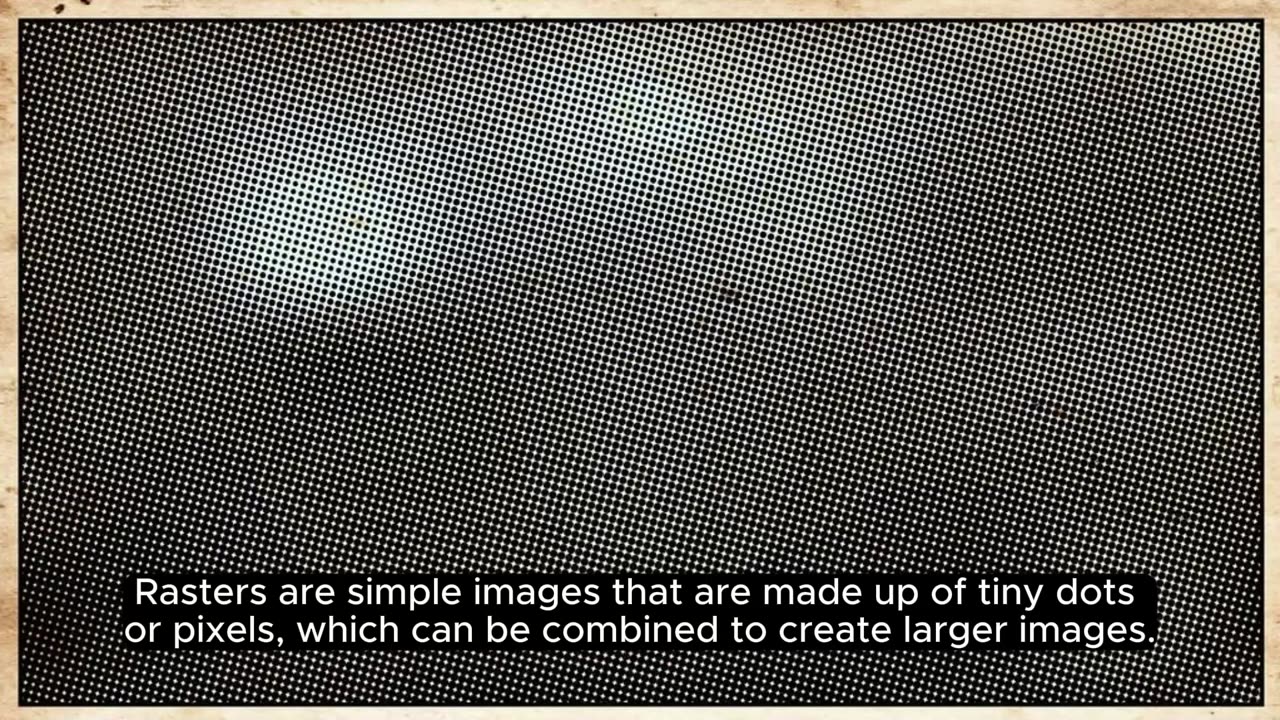Premium Only Content

Vector vs. Raster_ Why Vectors Are Important
"Vector vs. Raster: Why Vectors Are Important"
In the realm of digital graphics, the choice between vector and raster formats plays a pivotal role in determining the quality, scalability, and versatility of visual assets. Understanding the distinction between vectors and rasters is crucial for designers and creators seeking optimal outcomes in their projects.
Vectors, characterized by mathematical equations defining shapes and lines, offer unparalleled flexibility and scalability. This is particularly important in scenarios where resizing or zooming is a common requirement. Unlike raster images, which are composed of pixels and may lose quality when enlarged, vectors maintain their crispness and detail regardless of size. This inherent scalability makes vectors the preferred choice for logos, icons, and illustrations.
Moreover, vectors excel in precision and versatility. Designers can manipulate individual anchor points and paths, allowing for intricate detailing and customization. This precision is especially advantageous in creating intricate logos or intricate illustrations, providing the level of control necessary for achieving the desired aesthetic.
Vectors are resolution-independent, meaning they can be scaled indefinitely without loss of quality. This makes them ideal for various applications, from small icons on a website to large banners or billboards. The ability to maintain sharpness and clarity across diverse sizes positions vectors as a go-to solution for projects with varying output requirements.
On the other hand, raster images, composed of a grid of pixels, excel in representing complex visual details, such as photographs or images with intricate color variations. However, their limitation lies in scalability. Enlarging a raster image may result in a loss of quality and pixelation, making them less suitable for projects requiring flexibility in size.
In conclusion, the preference for vectors over rasters boils down to the specific needs of a project. Vectors shine in scenarios where scalability, precision, and versatility are paramount, making them indispensable for design elements that require adaptability across different platforms and sizes. Understanding the strengths of vectors and rasters allows designers to make informed choices, ensuring that their visual assets meet the highest standards of quality and adaptability.
-
 LIVE
LIVE
freecastle
5 hours agoTAKE UP YOUR CROSS- May the forces of evil become confused on the way to your house.
170 watching -
 1:23:05
1:23:05
Awaken With JP
5 hours agoGetting NUTS! FBI Did J6, Comey Indicted, and More! - LIES ep 110
41.6K24 -
 2:09:51
2:09:51
Pop Culture Crisis
2 hours agoJK Rowling OBLITERATES Emma Watson, Trump Vs Ariana Grande, Could The Rock be President? | Ep. 926
21.1K7 -
 LIVE
LIVE
The HotSeat
2 hours agoCommander In Chief and SECWAR Address The Troops, and I AM HERE FOR IT!
320 watching -
![[Ep 759] Resist Digital ID | Dems to Shut Down Gov | Obama Library Funds Tides / Terrorists](https://1a-1791.com/video/fwe2/55/s8/1/8/U/L/m/8ULmz.0kob-small-Ep-759-Resist-Digital-ID-De.jpg) LIVE
LIVE
The Nunn Report - w/ Dan Nunn
2 hours ago[Ep 759] Resist Digital ID | Dems to Shut Down Gov | Obama Library Funds Tides / Terrorists
153 watching -
 1:42:33
1:42:33
The Quartering
6 hours agoFat Soldiers BLASTED, Kirk Assassin In Court, JK Rowling Destroys Emma Watson & Crowder Takes Risk
120K24 -
 1:17:12
1:17:12
Winston Marshall
4 hours agoExposing The EU’s Plot To Destroy Free Speech in America | Mike Benz
48.5K19 -
 1:32:25
1:32:25
Sean Unpaved
5 hours agoMNF Mayhem: Doubleheader Drama, Cheetah's Crushing Fall, & MLB's October Ignition
54.1K2 -
 7:07
7:07
Michael Heaver
4 hours agoBroken UK Uncovers HORRIFYING Truth
17.7K13 -
 2:11:32
2:11:32
Russell Brand
5 hours agoGavin de Becker | Fear, Freedom & Resisting Control - SF642
187K18